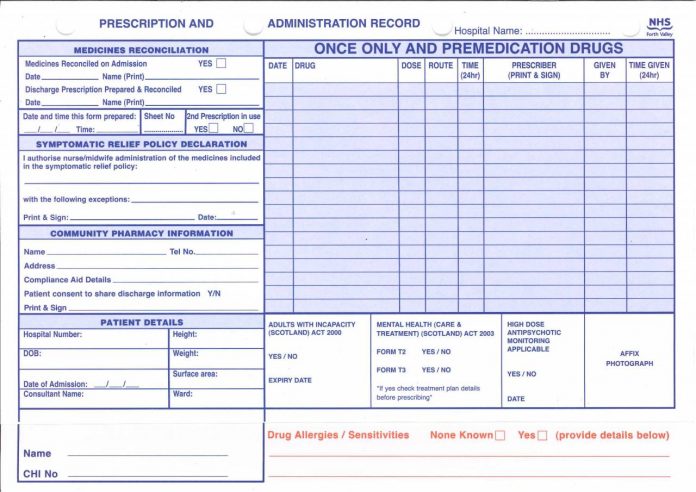The days of using paper to manage and record what medicines patients take during their stay in hospital are coming to an end.
The hospital prescription charts (known as Kardex), which are marked up by staff throughout the day to record when patients have received their medication, will be replaced by an electronic system known as HEPMA (Hospital Electronic Prescribing and Medicines Administration).
Originally developed in 1960s, the Kardex is a simple card designed to document which medicines a patient should receive along with the dose and frequency they should be given. It normally sits at the foot of a patient’s bed, and is regularly updated by staff who record and sign the card each time the patient receives medication.
Whilst the Kardex has served the NHS well it does have its limitations as Gail Caldwell, NHS Forth Valley’s Director of Pharmacy, explained. “The main drawback is that the Kardex is still a handwritten document and as we all know some peoples’ hand writing can be easier to read than others! This can cause delays and potential errors.
“The Kardex is also used and updated by a number of different staff throughout the day which means it can be moved around a lot and it’s not unusual for staff to have to spend time on the wards tracking it down before they can update it.”
A new electronic system would remove any problems with deciphering handwriting and also ensure that information could be easily accessed and updated by all relevant staff. It also makes it easier and quicker to order medicines by removing the need for duplicate paperwork and reducing the number of steps in the ordering process.
HEPMA can also build in additional checks and safeguards. For example, it can reduce the risk of staff entering certain drugs if a patient is allergic to them as well as flagging up potential interactions or side effects which can happen if certain drugs are used together.
Work is currently underway to make significant changes to our existing pharmacy systems in preparation for electronic prescribing. This should be completed by September 2015 to allow the new system to be piloted in a small number of wards before it is rolled out wider across all of our hospitals.
Gail Caldwell, is confident the new electronic system will bring real benefits but is careful not to undermine the scale of the challenge. She explained: “It will require new ways of working as well as comprehensive training and support. However, we can learn a lot from colleagues in other parts of Scotland who have already made this transition and I’m really excited about introducing this new system in Forth Valley.”







